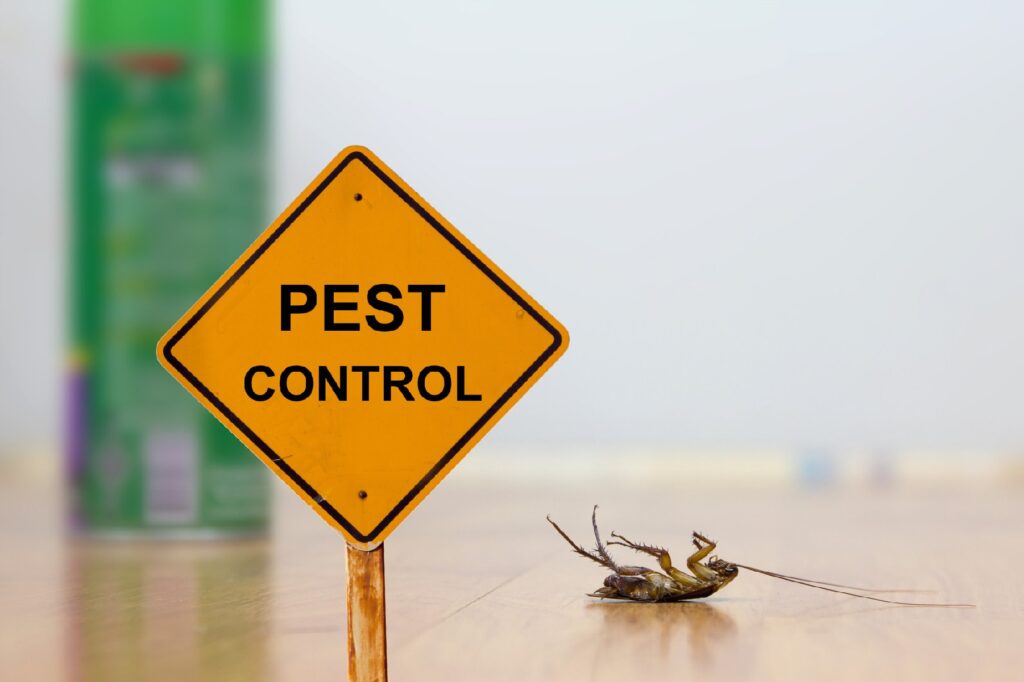Customized Pest Control Solutions Chicago: Tailored Program for Your Demands
A Comprehensive Guide to the Various Kinds of Pest Control Approaches
With the myriad of bug control techniques available, it can be frustrating to locate the most effective solution for a certain insect trouble. In this extensive overview, we will certainly discover these various kinds of pest control methods, providing understandings into their applications and advantages. By the end, you will have a clearer understanding of which approach might be the ideal fit for your insect control requirements.
Chemical Pest Control Techniques

One common kind of chemical bug control is pesticides. Insecticides target details bugs, such as insects, termites, or ants, and can be utilized both inside your home and outdoors.
One more kind of chemical parasite control is rodenticides. These are chemical substances designed to control populations of rodents, such as rats and mice. Rodenticides are typically used in bait kind, which brings in the rodents and after that eliminates them after ingestion. They are generally used in farming setups, as well as in household and commercial structures (Customized pest control solutions Chicago).
Herbicide, additionally understood as herbicides, are another sort of chemical parasite control method. Herbicides are developed to uniquely kill unwanted plants, recognized as weeds, without creating injury to desirable plants. They are generally utilized in agriculture, landscaping, and horticulture to manage the growth of undesirable plants.
While chemical parasite control methods can be extremely effective in removing bugs, it is essential to utilize them carefully and follow safety guidelines. Overuse or misuse of chemical pesticides can have negative effect on human health and the atmosphere. It is essential to employ these approaches responsibly and consider different bug control techniques whenever feasible.
Organic Insect Control Techniques
Organic parasite control approaches include the use of living microorganisms or all-natural substances to manage and manage pest populaces. Unlike chemical approaches, which often count on artificial pesticides, organic control methods use the all-natural adversaries of parasites to manage their populations. This method is considered even more environmentally pleasant and sustainable, as it minimizes using dangerous chemicals and lessens the threat of chemical resistance.
One commonly made use of organic bug control method is the intro of natural predators or bloodsuckers. Ladybugs are introduced to manage aphids, while specific wasp types are launched to target caterpillars. These killers and parasites eat pests, minimizing their numbers and protecting against infestations.
One more biological control approach is using virus. Particular microorganisms, infections, and fungis can be employed to contaminate and eliminate certain insects. For instance, the bacterium Bacillus thuringiensis is frequently used to regulate caterpillars, as it produces contaminants that are deadly to these pests.
Biological control techniques can likewise entail using pheromones or natural substances that disrupt the mating patterns of pests. By hindering their reproduction, these approaches help to lower pest populations with time.
While biological parasite control methods are usually reliable, they might call for longer durations to accomplish wanted results contrasted to chemical approaches. In addition, mindful consideration needs to be offered to the option and launch of all-natural enemies to avoid unintended injury to beneficial microorganisms or communities.
Physical Pest Control Techniques
To effectively handle and regulate pest populaces, alternative parasite control approaches recognized as physical bug control approaches are used. Another physical insect control method is the installation of fencings or walls to keep bigger parasites, such as deer Resources or bunnies, out of yards or farming areas. Physical bug control techniques are an ecologically friendly alternative to chemical pesticides, as they do not rely on the use of dangerous chemicals.
All-natural Bug Control Techniques
Natural pest control techniques provide a lasting home and green approach to managing and getting rid of insects. These approaches prioritize the usage of natural materials and biological representatives, reducing the requirement for chemical pesticides that can harm the setting and human health and wellness. Among the most typical natural pest control techniques is biological control. This includes presenting all-natural killers or bloodsuckers to take advantage of or parasitize the bugs. Ladybugs are frequently presented to yards to manage aphid populations. One more natural approach is the usage of repellents derived from plants. Specific plants, such as marigolds, lavender, and peppermint, emit scents that ward off bugs like insects, flies, and ants. Furthermore, cultural control practices can be used to avoid and take care of insect problems. This consists of correct cleanliness, regular upkeep, and promoting biodiversity in the yard. Rotating plants, getting rid of yard debris, and motivating natural predators can assist stop the buildup of pests. By taking on these natural bug control techniques, individuals and communities can properly manage pests while reducing the unfavorable influence on the atmosphere and human wellness.
Integrated Bug Administration (IPM)
Integrated Pest Management (IPM) is a detailed and methodical approach to pest control that integrates various approaches and methods to effectively take care of parasites while minimizing making use of chemical pesticides. IPM aims to preserve bug populaces below the economic injury degree by using a mix of social, biological, and chemical control methods.
Social control methods entail modifying the environment to make it less positive for insects. This can consist of practices such as plant turning, correct hygiene, and the use of immune plant selections. By developing negative conditions for pests, social control methods can considerably lower pest populations.

Chemical control methods are made use of as a last option in IPM. They entail the targeted and judicious use of chemicals to manage insect populations. Unlike conventional insect control approaches, IPM intends to lessen using chemical pesticides by utilizing alternate methods.
Integrated Bug Monitoring (IPM) is a proactive method that focuses on long-term bug monitoring as opposed to relying exclusively on reactive steps. By combining several control approaches, IPM supplies a more sustainable and environmentally friendly method to pest control.
Verdict
It discussed chemical, organic, physical, and natural insect control techniques, as well as the integrated bug management method. By recognizing these various techniques, people can make enlightened choices on which bug control technique is most suitable for their certain needs and choices.